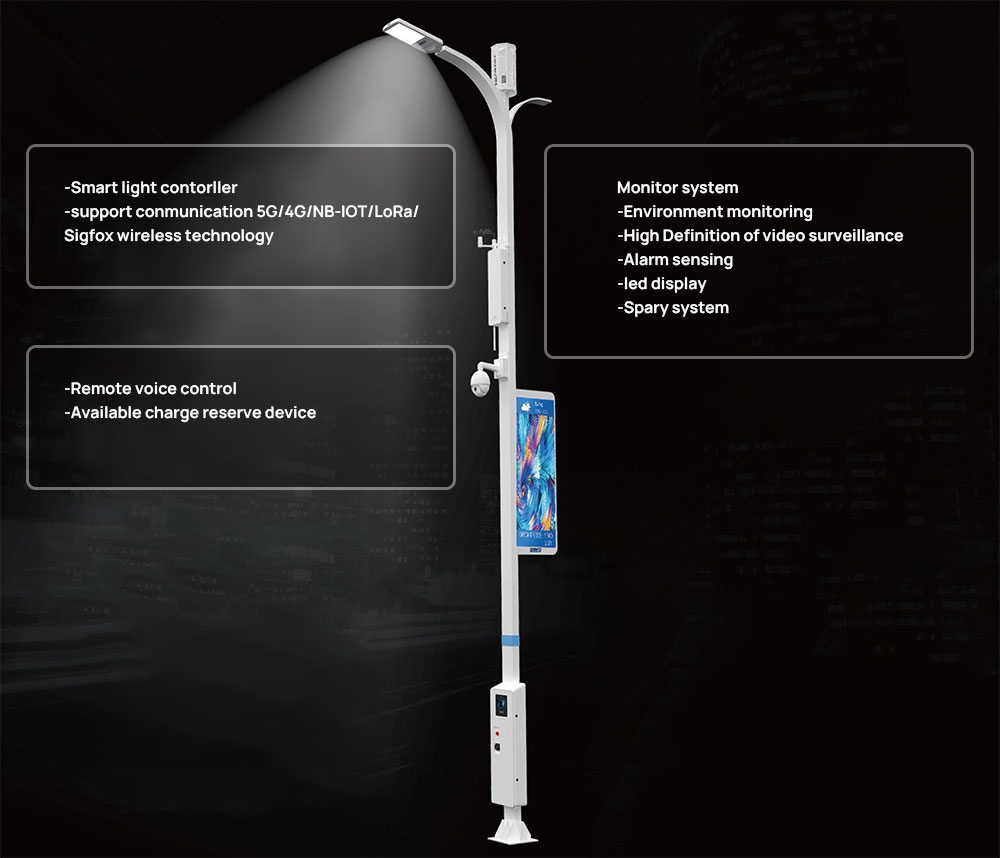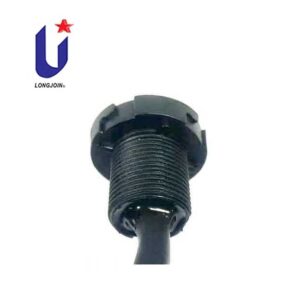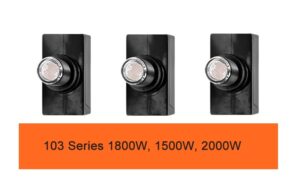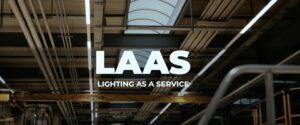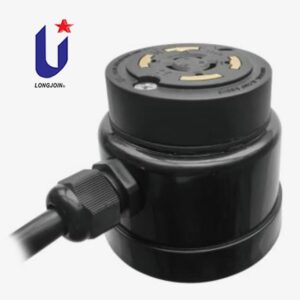ما الذي يجعل وحدات التحكم الضوئية الخاصة بـ Long-join مميزة في السوق؟
يقدم
تشهد المدن حول العالم توسعًا سريعًا، ويتزايد الطلب على الإضاءة أيضًا. تستهلك الإضاءة جزءًا كبيرًا من الطاقة العامة، وتستهلك طاقةً تفوق أي شيء آخر تقريبًا. غالبًا ما تعمل الإنارة التقليدية على الطرق السريعة والشوارع طوال الليل، ما يُهدر الكهرباء عندما لا يحتاجها أحد. نعيش في زمنٍ أصبح فيه توفير الطاقة والاهتمام بالأرض أمرًا بالغ الأهمية، ولم يعد إهدار الطاقة مقبولًا.
تنمو المدن بسرعة وتواجه مشاكل جديدة. ترتفع تكاليف الصيانة، وتصبح الإضاءة قديمة الطراز، وتحتاج الشوارع إلى أن تكون أكثر ذكاءً وأمانًا. وهنا يأتي دور تقنية التحكم الضوئي. إنها طريقة ذكية وموثوقة لأتمتة الإضاءة الخارجية مع خفض التكاليف وانبعاثات الكربون.
تجعل الإلكترونيات ذات الوصلات الطويلة موثوقة الخلايا الضوئيةتقود الشركة الجهود المبذولة لحل هذه المشكلة عالميًا. تُعزز حلولها عالية الأداء لمستشعرات الإضاءة بالخلايا الضوئية توفير الطاقة، كما تلعب دورًا محوريًا في بناء المدن الذكية.
لماذا تم إنشاء وحدات التحكم الضوئية في المقام الأول؟
قبل ظهور أنظمة التحكم الضوئي، كانت أنظمة إضاءة المدن تعتمد على أنظمة قديمة. كانت هذه الأنظمة إما تعمل لوقت طويل جدًا أو تُشغل متأخرًا جدًا. كانت هذه الأنظمة تستهلك الكثير من الكهرباء وترفع الفواتير، كما أنها تُرهق ميزانيات المدن. البلديات التي تستخدم مؤقتات ثابتة أو مفاتيح يدوية لا تستطيع التكيف مع تغيرات ضوء النهار أو الطقس، مما يجعل عملية الإضاءة غير فعالة.
يمكن لمدينة واحدة تشغيل عشرات الآلاف من المصابيح. حتى ساعة إضافية واحدة من التداخل قد تُكلف مبالغ طائلة. فهي تُسبب ارتفاعًا في غازات الاحتباس الحراري، وتُسرّع احتراق المصابيح. تُريد المدن حول العالم إضاءةً ذاتية التشغيل تستهلك طاقةً أقل. عليها تحقيق ذلك دون تكلفة إضافية أو تعقيد.
مشكلة | إنارة الشوارع التقليدية | حل وحدة التحكم الضوئية |
الإفراط في الاستخدام | تظل الأضواء مضاءة لفترة طويلة | يتم إيقاف التشغيل تلقائيًا بناءً على مستويات الإضاءة |
بدء متأخر | الأضواء تأتي متأخرة جدًا | يتم تنشيطه عند الغسق بناءً على الضوء المحيط في الوقت الفعلي |
خطأ بشري | يحتاج إلى تعديل يدوي | آلية بالكامل ويتم التحكم بها بواسطة أجهزة الاستشعار |
التكلفة العالية | يهدر الطاقة والعمالة | خفض التكاليف عن طريق تحسين الاستخدام |
كيف يساعد المتحكم الضوئي في حل مشكلة هدر الطاقة؟
تستجيب للظروف المتغيرة، كالأيام الغائمة أو غروب الشمس المبكر. تُزيل وحدات التحكم الضوئية هذه الصلابة.
تستخدم الخلية الضوئية لإضاءة الشوارع تقنية استشعار الضوء لاكتشاف مستويات سطوع البيئة المحيطة. عندما يتلاشى ضوء النهار إلى مستوى مُحدد مسبقًا، يُفعّل مستشعر الضوء الإضاءة. وعند حلول الصباح، يُطفأ.
عملية استشعار الصورة هذه آلية. تعمل بدون ساعات أو مفاتيح يدوية. تُضاء الأضواء عند الحاجة إليها وتُطفأ عند عدم الحاجة. هذا هو سر المدن الذكية الموفرة للطاقة.
تستخدم مستشعرات الخلايا الضوئية من لونغ-جوين - مثل تلك الموجودة في سلسلة JL-207 - مستشعرات ضوئية كهربائية لاكتشاف حتى التغيرات الطفيفة في ظروف الإضاءة. هذا يقلل وقت التشغيل غير الضروري ويخفض فواتير الطاقة بما يصل إلى 40% مع مرور الوقت.
كيف يمكن للإضاءة الذكية تقليل الصيانة والعمالة؟
أنظمة الإضاءة اليدوية تُهدر الكثير من الطاقة، وتتطلب فحوصات بشرية دورية. يجب على الفنيين فحص الأضواء وضبط المؤقتات واستبدال القطع بشكل متكرر. يؤدي الاستخدام غير المتساوي والإفراط في الاستخدام إلى احتراق بعض الأضواء بسرعة كبيرة. تستغرق هذه المهام وقتًا طويلاً، وتكلفتها باهظة، وغالبًا ما تُغفل.
تعمل مستشعرات الإضاءة الضوئية بمفتاح تحكم عن بُعد ذكي. فهي تُقلل من احتياجات الصيانة بشكل كبير. ولأنها تتكيف تلقائيًا مع ظروف الإضاءة الطبيعية، وتُشغّل وتُطفأ تلقائيًا، فإن الأعطال أقل تكرارًا.
يدمج Long-join أجهزة استشعار الضوء التلقائية في أنظمة الإضاءة الذكية للتحكم، مما يسمح لإضاءة الشوارع في جميع أنحاء المدينة بالعمل دون إشراف مستمر.
عنصر التكلفة | بدون التحكم الذكي | مع وحدات التحكم الضوئية |
تَعَب | هناك حاجة إلى عمليات تفتيش منتظمة | الحد الأدنى من الصيانة |
طاقة | غالبا ما يتم تركها قيد التشغيل | تم تحسين التشغيل/الإيقاف |
معدل الفشل | مرتفع بسبب خطأ بشري | منخفض مع أجهزة الاستشعار الذكية |
الترقيات | صعب | معيارية وقابلة للتكيف |
ما هو الدور الذي تلعبه وحدات التحكم الضوئية في بناء المدن الذكية؟
تزدهر المدن الذكية بفضل البيانات والأتمتة. والإضاءة ليست استثناءً. بفضل وحدات الاتصال المدمجة في تصميماتها، تجمع وحدات التحكم بالصور البيانات آنيًا وترسلها إلى منصات مركزية. تساعد هذه الرؤى المدن على تحسين استخدام الطاقة، حيث تقلل من انقطاعات التيار الكهربائي وتضبط جداول الإضاءة.
تتجاوز وحدات التحكم الحديثة في إضاءة الشوارع بالخلايا الضوئية التبديل بين الغسق والفجر. فهي تحتوي على وحدات اتصال مثل زيجبي, لو-را, واي فاي، أو إنترنت الأشياء ضيق النطاقتتيح هذه الوحدات إرسال البيانات إلى أنظمة مركزية. وهذا يُنشئ شبكة إضاءة ذكية تتكيف مع تقلبات الطقس، كما تستجيب لحركة المشاة واحتياجات الطوارئ.
تعمل مستشعرات الضوء الضوئية الخارجية من Long-join مع كل من مقابس NEMA ومقابس زاغا. يمكن تركيبها بسهولة في أنظمة إضاءة المدن الذكية الجديدة أو المُجدَّدة.

هل يمكن لوحدات التحكم الضوئية العمل في البيئات الخارجية القاسية؟
تواجه الأضواء الخارجية الطبيعة طوال العام. فهي تتحمل الحرارة الشديدة والعواصف الشديدة والغبار والرطوبة الشديدة والبرد القارس. قد تتآكل أجزاؤها الضعيفة أو تتعطل أو تتعرض لقصر كهربائي، مما يُعطل نظام الإضاءة بأكمله.
منتجات التحكم الضوئي من لونغ-جوين مُجهزة بحماية من زيادة التيار، وأغلفة مقاومة للأشعة فوق البنفسجية، وتعويض حراري. هذا يُساعد مستشعراتها الضوئية على العمل بكفاءة عالية، حتى في الظروف القاسية.
يختبرون منتجاتهم لضمان استيفائها لمعايير مقاومة الماء IP65 وشهادة UL/CE. هذا يضمن تشغيلًا آمنًا ومستمرًا في جميع الأحوال الجوية.
التحدي البيئي | ميزة وحدة التحكم الضوئية |
الصواعق وارتفاعات الطاقة | حماية مدمجة من زيادة التيار |
تقلبات درجات الحرارة | تقنية تعويض درجة الحرارة |
التعرض للماء/الغبار | غلاف محكم الإغلاق بتصنيف IP65 |
الأشعة فوق البنفسجية | بناء من مادة مقاومة للأشعة فوق البنفسجية |
أين يتم استخدام وحدات التحكم في الصور عادةً؟
الإضاءة الذكية ليست مجرد تحديث لشوارع المدينة، بل تُحسّن أي مساحة خارجية تحتاج إلى إضاءة ثابتة وفعالة. سواءً كان ذلك من أجل السلامة أو الراحة أو الامتثال، فإن تأثيرها واسع النطاق.
لا تقتصر استخدامات وحدات التحكم بالصور على شوارع المدن، بل تشمل العديد من احتياجات الإضاءة الخارجية:
- إنارة الشوارعيتكيف مع الضوء الطبيعي. يوفر تكاليف الكهرباء لميزانيات المدينة.
- المجتمعات السكنية والمتنزهاتيجعل حيّك أكثر أمانًا. لياليك هادئة وساكنة.
- المصانع والمناطق الصناعيةيُحسّن الرؤية، ويعزز سلامة العمال في المناطق شديدة التحمل.
في كل إعداد، يضمن نظام التحكم في الخلايا الضوئية من Long-join الأداء الذكي، والحد الأدنى من الصيانة، والحد الأقصى لعمر الأصول الإضاءة.

ما الذي يجعل وحدات التحكم الضوئية الخاصة بـ Long-join مميزة في السوق؟
مع وجود العديد من مُصنِّعي أنظمة التحكم في الإضاءة، تُعدّ الموثوقية والمرونة والشهادات أمرًا بالغ الأهمية. تتميز Long-join بتقديم حلول مُصمَّمة خصيصًا ومدعومة بالامتثال العالمي.
إنهم يقدمون:
- حلول قابلة للتخصيص تلبي احتياجات العملاء المتنوعة ومتطلبات الجهد الكهربائي.
- هذه المنتجات تلبي المعايير العالمية. وهي تتبع يو ال, م، و ايزو
- إنه يعمل مع فيليبسأضواء ذكية. كما أنها مرتبطة بـ كري ومنصات الإضاءة الذكية الأخرى الرائدة.
- تتميز هذه الشركات بنسبة أداء ممتازة من حيث التكلفة. إنها الخيار الأمثل للمشاريع التي تحتاج إلى التوسع.
هُم JL-207 و مقبس JL-700 NEMA تعمل في العديد من الإعدادات. ما عليك سوى توصيلها وتشغيلها فورًا.
خاتمة
تتزايد احتياجات الطاقة العالمية، مما يزيد من الضغط علينا لتحديث بنيتنا التحتية. وتُثبت أنظمة التحكم الضوئي الذكية أنها محرك رئيسي في هذا التحول. فبفضل قدرتها على الأتمتة والترشيد والتواصل، تُمثل هذه الأنظمة الجهاز العصبي الخفي الذي يُدير شبكات الإضاءة الحديثة.
تواصل لونغ-جوين ريادتها في هذا التحول، مقدمةً حلول إضاءة قوية ومتكيّفة وجاهزة للمستقبل تُغذي المدن الذكية حول العالم. من الغسق إلى الفجر، ضوء الشارع بالخلايا الضوئية إن الأنظمة تضيء الطريق إلى الأمام.
الروابط الخارجية:
●https://en.wikipedia.org/wiki/Cree
●https://www.philips.ng/
●https://www.iso.org/home.html
●https://www.assent.com/resources/knowledge-article/what-is-ce-certification/
●https://www.ul.com/
●https://en.wikipedia.org/wiki/Narrowband_IoT
●https://en.wikipedia.org/wiki/Wi-Fi
●https://en.wikipedia.org/wiki/LoRa
●https://en.wikipedia.org/wiki/Zigbee

